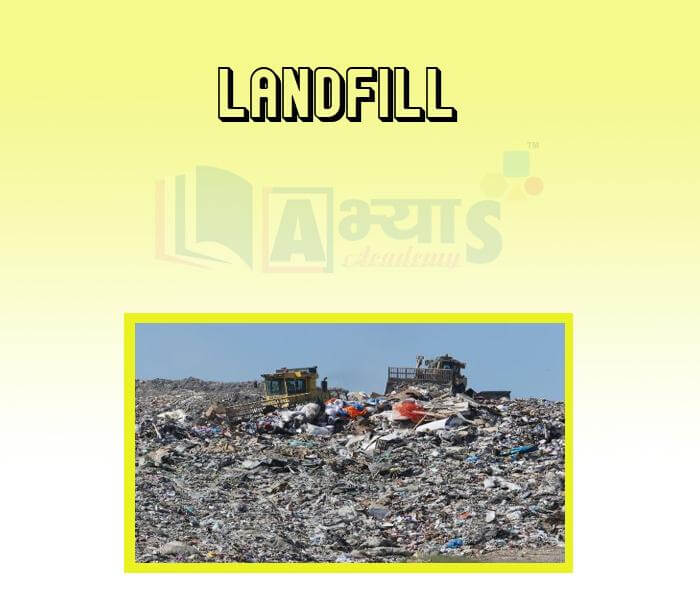Landfill









Landfill
A landfill site, also known as a tip, dump, rubbish dump, garbage dump, or dumping ground, is a site for the disposal of waste materials. Landfill is the oldest and most common form of waste disposal, although the systematic burial of the waste with daily, intermediate and final covers only began in the 1940s.
Solid waste is the number one contributor of landfill waste disposal. Homes, schools, restaurants, public places, markets, offices and so on produce a great deal of rubbish, garbage and used materials. The bulk of these wastes eventually end up in the landfills. Examples of the solid waste materials include wood, paper, plastic, broken furniture, glass, grounded cars, obsolete electronic products, and hospital and market waste.
Because most of these waste materials are non-biodegradable, they heap in the landfills where they stay for years. The scenario is even worse for poorly managed waste disposal systems and normally results in damage to the land and the surrounding environment.
Agricultural wastes arise from waste materials generated from animal manure, crop, and farm remains. The solid wastes like the animal manure and other agricultural by products are collected and dumped in the landfills. These agricultural remnants are highly toxic and can contaminate the land and water resources. Once in the landfills, the wastes remain there for years impacting on soil quality and polluting the land.
Industrial processes, construction activities and power plants produce a wide range of solid byproducts and residues. The predominant waste products are generated from oil refineries, power plants, construction works, pharmaceuticals, and agricultural product producers. The solid wastes usually find way to the landfills.
Advantages of LandfillsLarge areas used for waste disposal are called landfills. In a landfill garbage is buried in such a way that it does not damage the environment. Garbage buried inside landfills stay there for a long time as it decomposes very slowly. When the landfill is completely filled, a park may be developed on it.
Humus is an example of ___________________ | |||
| Right Option : B | |||
| View Explanation | |||
Define Landfill: | |||
| Right Option : B | |||
| View Explanation | |||
Which of the following is an example of a landfill park in India? | |||
| Right Option : A | |||
| View Explanation | |||
Students / Parents Reviews [10]
Abhyas is a complete education Institute. Here extreme care is taken by teacher with the help of regular exam. Extra classes also conducted by the institute, if the student is weak.

Om Umang
10thIt was a good experience with Abhyas Academy. I even faced problems in starting but slowly and steadily overcomed. Especially reasoning classes helped me a lot.

Cheshta
10thA marvelous experience with Abhyas. I am glad to share that my ward has achieved more than enough at the Ambala ABHYAS centre. Years have passed on and more and more he has gained. May the centre flourish and develop day by day by the grace of God.

Archit Segal
7thOne of the best institutes to develope a child interest in studies.Provides SST and English knowledge also unlike other institutes. Teachers are co operative and friendly online tests andPPT develope practical knowledge also.

Aman Kumar Shrivastava
10thMy experience with Abhyas is very good. I have learnt many things here like vedic maths and reasoning also. Teachers here first take our doubts and then there are assignments to verify our weak points.

Shivam Rana
7thMy experience with Abhyas academy is very good. I did not think that my every subject coming here will be so strong. The main thing is that the online tests had made me learn here more things.

Hiya Gupta
8thAbhyas Methodology is very good. It is based on according to student and each child manages accordingly to its properly. Methodology has improved the abilities of students to shine them in future.

Manish Kumar
10thAbout Abhyas metholodology the teachers are very nice and hardworking toward students.The Centre Head Mrs Anu Sethi is also a brilliant teacher.Abhyas has taught me how to overcome problems and has always taken my doubts and suppoeted me.

Shreya Shrivastava
8thMy experience was very good with Abhyas academy. I am studying here from 6th class and I am satisfied by its results in my life. I improved a lot here ahead of school syllabus.

Ayan Ghosh
8thIt was good as the experience because as we had come here we had been improved in a such envirnment created here.Extra is taught which is beneficial for future.
